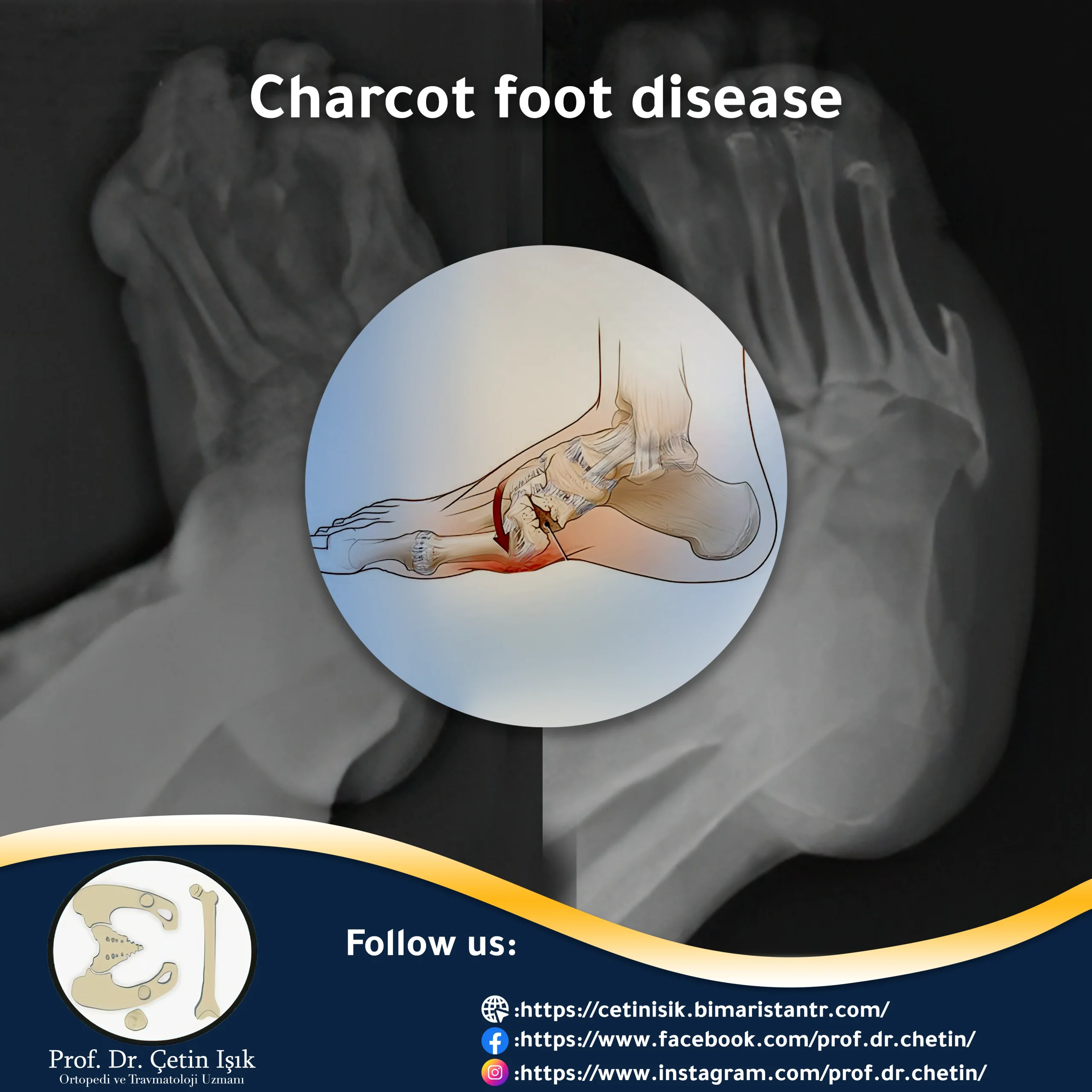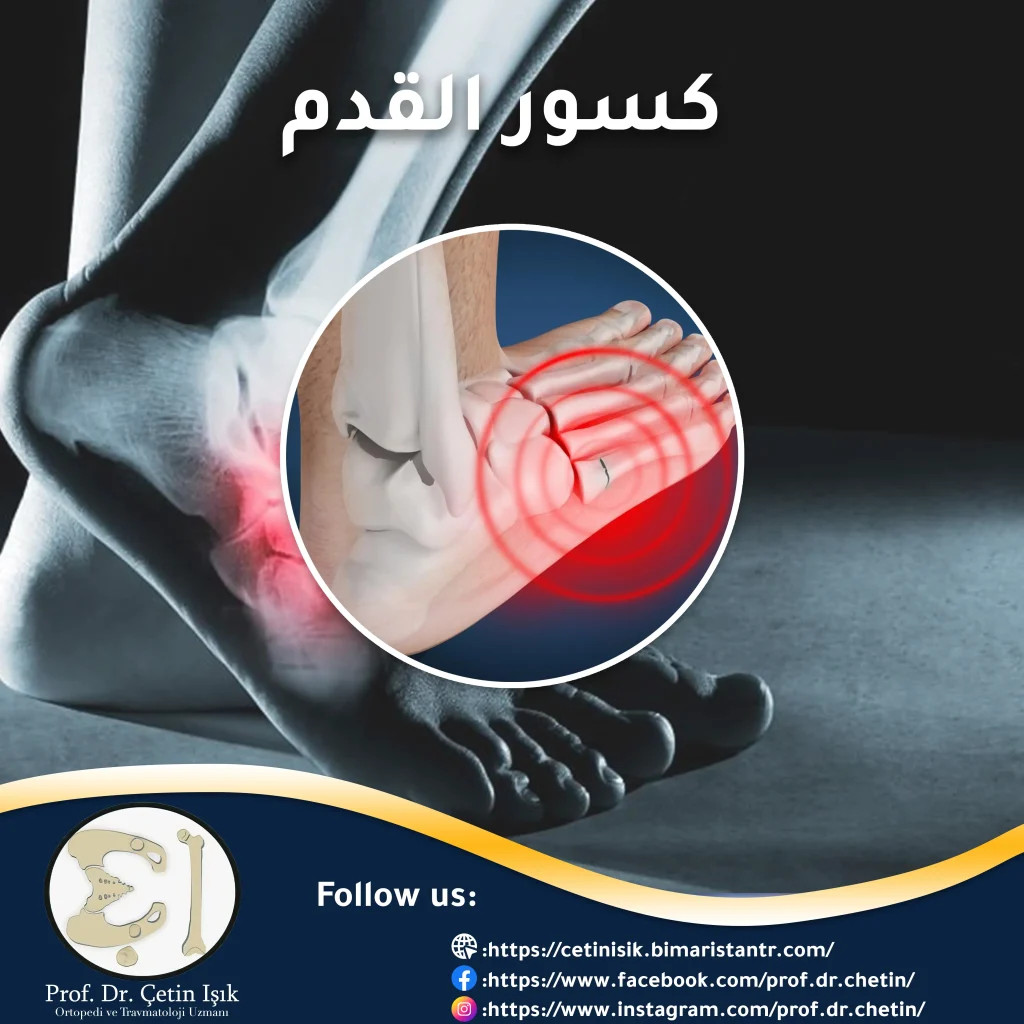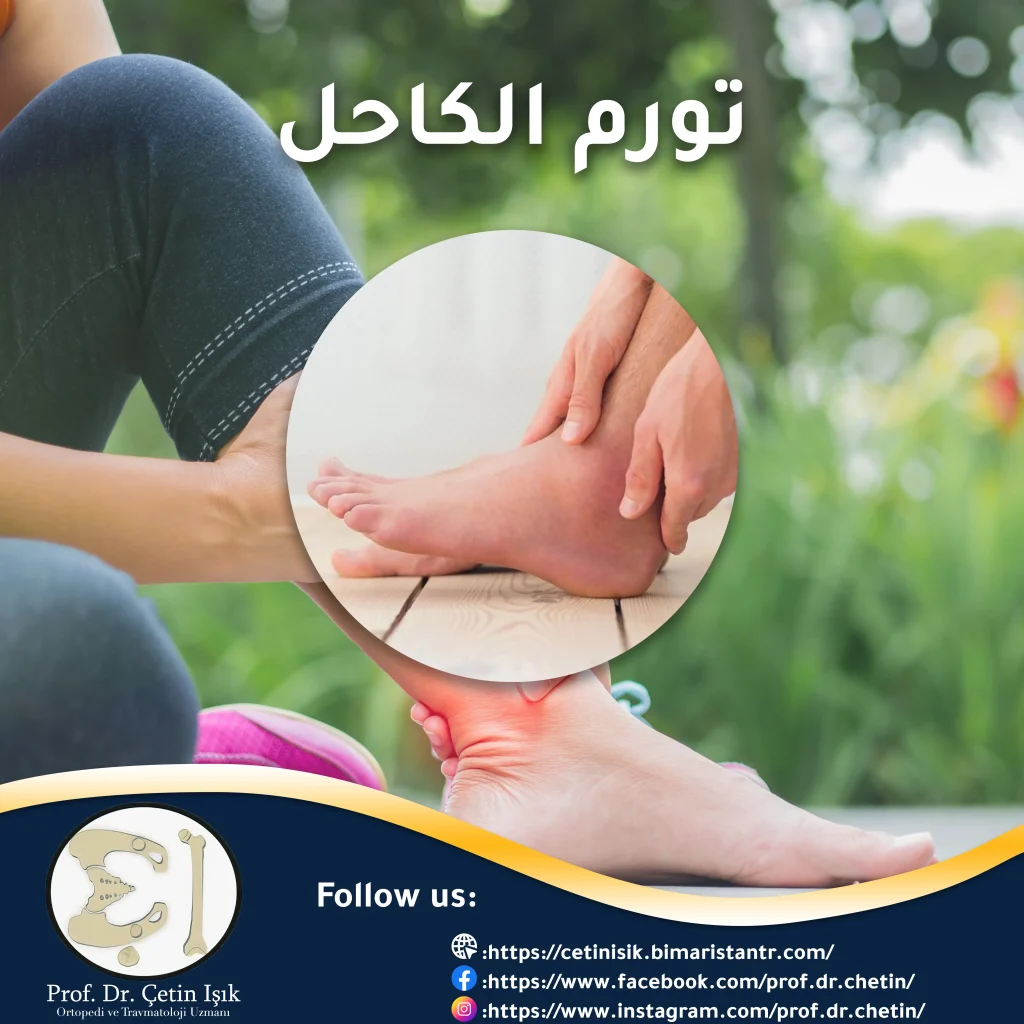Charcot foot disease is a rare, disabling disorder that affects the bones, joints, and soft tissues of the feet and ankles. Over time, it can cause painful sores or change the foot's shape.
Charcot's foot disease is an inflammatory process that affects the tissues in the joints and bones in the foot and ankle. It is likely to limit the movement of the injured person as it causes bone deformities that may eventually require amputation if neglected and left untreated; continue reading the article to know about Charcot's foot disease And the most important causes and complications, in addition to methods of diagnosis and treatment.
What is Charcot foot disease?
Charcot foot disease Charcot neuropathy or Joint diabetic charcot It is a condition that causes weakness in the bones of the feet, which makes them vulnerable to damage such as fractures or dislocation of the ankle and foot joint. It mainly occurs in people with peripheral nerve damage, especially patients with diabetes, which causes loss of sensation in the feet.

Charcot foot is a serious condition that can cause ulcers that don't heal, severe deformity or disability, and even amputation of the affected foot.
Causes of Charcot's feet
Charcot foot disease develops as a result of peripheral neuropathy that reduces the ability to feel heat, pain, or microfractures, so the patient continues to use his feet, making the injury worse.
Charcot's foot is closely linked as a rare complication of diabetes, but peripheral neuropathy is associated with many other diseases, such as:
- Inflammatory conditions, such as sarcoidosis or psoriasis
- Charcot-Marie-Tooth disease
- Alcohol use disorders
- leprosy
- Poliomyelitis
- Syringomyelia
- Peripheral nerve infection
- Syphilis
- Acquired immunodeficiency virus (AIDS)
- Parkinson's disease
- Diabetic peripheral neuropathy patients with a pulled Achilles tendon have also been shown to have a tendency to develop Charcot's foot disease
There are factors contributing to the formation of Charcot foot, such as:
- Existence torsion Or a bone fracture that has not been treated directly
- Unhealed foot ulcers
- Slow-healing foot surgery
Charcot foot symptoms
The early stage of Charcot foot is characterized by the presence of the following symptoms that occur gradually:
- Mild pain and discomfort
- Redness and warmth in the affected foot, which is a natural response to the inflammatory process in the foot
- Significant swelling in the extremities, as the patient finds it difficult to wear shoes
In the later stages of the injury, bone fractures begin to move out of place, the bony arch in the middle of the foot collapses (disappearance of the plantar arch), the toes curve due to internal muscle contraction, the ankle becomes twisted and unstable and due to these deformities pressure sores or foot ulcers form.
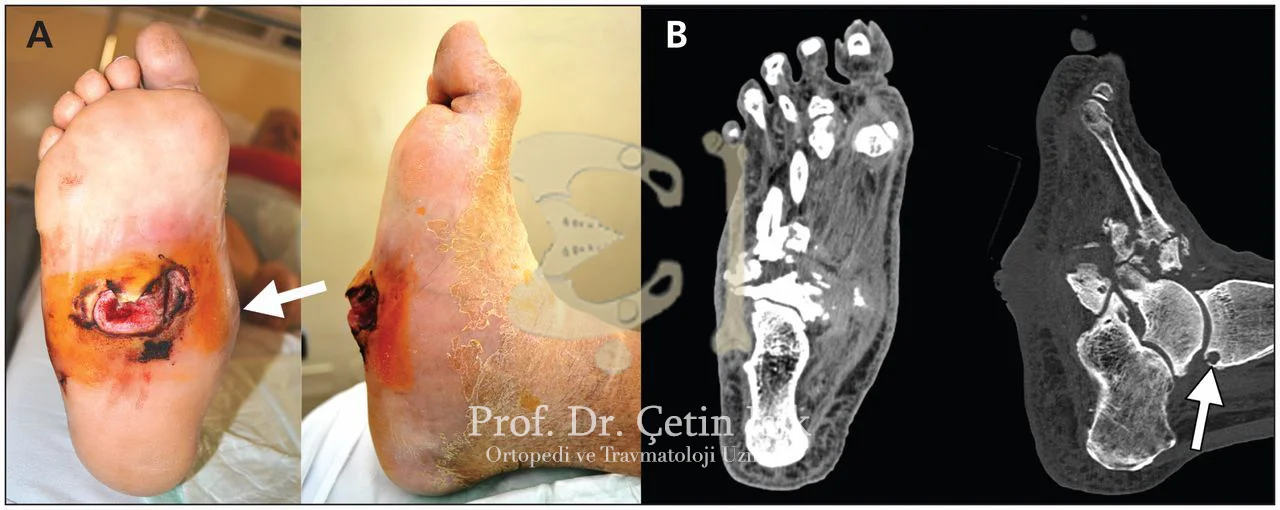
Due to the numbness of the foot, these sores may grow broader or more profound, and the high blood sugar level in patients makes it difficult for the body to fight infection, and foot ulcers also develop.
Diagnosing Charcot foot
It is not always easy to detect Charcot's foot early, although this is important for the effectiveness of treatment, as it can be confused with osteitis.
First, the doctor will know the patient’s medical history and if he suffers from a health condition that leads to Charcot’s foot, then he will request blood tests to rule out other possible causes of infection.
In addition to detailing the complaint and onset of symptoms, the doctor checks for signs of neuropathy through a physical examination of the ankles and feet and the following tests:
- Acupuncture: It assesses the patient's ability to sense pain
- Neurometric test: which identifies peripheral nerve dysfunction such as diabetic neuropathy
- Semmes-Weinstein test: which analyzes sensitivity to pressure and touch in large nerve fibers
In advanced stages, radiographic techniques can be useful in diagnosis or follow-up treatment, such as:
Computed tomography: provides a detailed picture of the ankle and foot joint, and the CT scan helps in accurate planning of the type of surgery to be used in the treatment
MRI and ultrasound: show the condition of the tissues, and if an abscess or infection has formed in the tissues
Bone scan: It can be effective in determining if there are infections in the bone
X-rays: which are performed periodically after starting treatment to monitor the disease
Complications of Charcot foot
The healing of ulcers formed due to diabetes, poor blood circulation in the foot and the development of infections is often impaired, as this infected ulcer that does not heal poses a threat to the extremities and may lead to amputation of the foot or even the leg.
Charcot foot treatment
Early diagnosis and treatment of Charcot foot help prevent severe deformities and complications. Herein lies the importance of investigating the condition and expediting treatment with the first signs of the disease. Charcot's foot treatment aims to prevent bone loss or the formation of deformities and allow them to heal
Non-surgical treatments for Charcot foot
Many non-surgical treatments help stop the progression of the disease. The main key to treatment in the early stages lies in relieving pressure on the affected foot. This can be done through several options, including the following:
- Removing all weight on the foot by using crutches or a walking wheelchair
- Wearing a splint that is specially fitted according to the foot of each patient, the splint is usually changed every week or two to ensure that it still fits the leg with reduced swelling and to ensure that ulcers do not develop
- Use an orthotic brace to correct foot and leg alignment
- Wearing Charcot footwear to relieve pressure points that may cause injuries or blisters
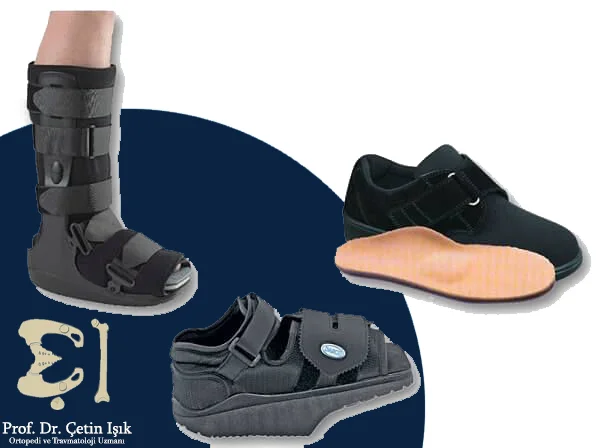
In most cases, recovery from Charcot foot takes about 3 months.
Treating Charcot foot with surgery
The doctor may recommend surgery if the patient's foot becomes too unstable or cannot be supported by any means due to the deformity, or if the patient has a sore that does not heal.
Methods for treating Charcot's foot include many options. The optimal surgeon chooses the case according to the degree of infection, and includes the following:
Debridement of the ulcer: Ulcers may require surgical assistance to heal. This includes cleaning the ulcer and removing any dead skin.
Bone reconstruction: This procedure is also known as osseointegration, in which the bone in the foot or ankle is shortened or lengthened to change its alignment and improve the ability to support the joint.
Ankle fusion: In this procedure, screws, rods, or plates are used to lock down the ankle joint and prevent movement.
Excision: The plantar bone spurs that cause ulcers are removed.
Amputation and prostheticsIn severe cases of Charcot disease, such as severe deformity, deep bone infection, or ischemic loss of the foot, the affected foot or part of it is amputated, followed by the placement of a prosthetic foot.
Prevention of Charcot foot disease
The patient can play a vital role in preventing Charcot foot and its complications by following these measures:
- Maintaining blood sugar levels helps reduce the progression of nerve damage in the foot
- Trying to avoid injuries such as collision or exaggeration in exercising and sports that affect the feet, such as football. Not wearing shoes that cause additional pressure, such as shoes with heels.
- Perform daily self-examinations to check for early signs of illness
- Follow your surgeon's instructions for long-term treatment to avoid recurrence of ulceration or amputation
In the end, Charcot foot disease is a condition that requires care at the onset of the infection, especially in the presence of diabetes mellitus, for fear of developing complications in them at a more rapid rate. It is essential to follow up the development of the infection even after recovery with a specialist doctor.
Sources:
Common questions
Diabetic peripheral neuropathy is the most common cause of Charcot foot.
Charcot joint is a disease that attacks bones, joints and soft tissues, often develops as a result of neuropathy due to diabetes, affects one or both feet, leads to instability of the ankle and foot.
The treatment of Charcot's disease varies according to the severity of the condition. In the early stage, decompression of the foot forms the basis of treatment.
The danger of the Charcot joint lies in its complications if left untreated, as it may lead to amputation of the foot or leg.


